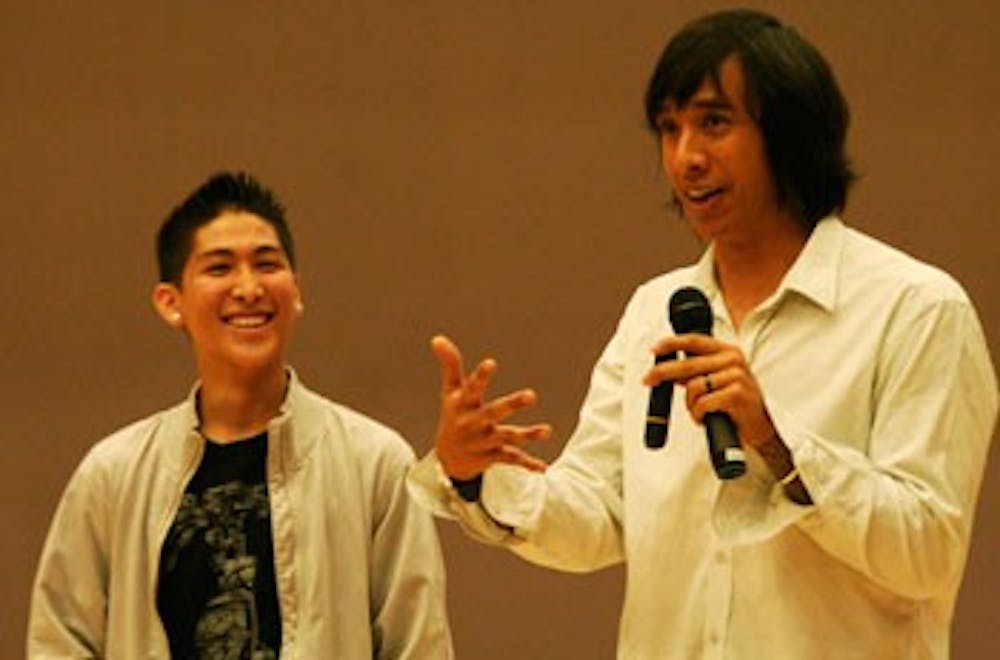Through stand-up comedy, slam poetry, two short personal films and highlights from his two identity-based exhibits, artist Kip Fulbeck gave a dynamic and compelling presentation Thursday in the Nelson Mandela Auditorium.
The performance and reception that followed was the culmination of Fulbeck’s piece, “part asian, 100% hapa.” The exhibit — videos and portraits of a variety of individuals — has lined the walls of the FedEx Global Education Center since July 1.
Fulbeck, also a professor of art at the University of California at Santa Barbara, explained the current exhibit and one of his additional works, “Permanence.” The latter is a book about people, their tattoos and their stories.
He shared his experience creating these exhibits through slideshows of individuals and anecdotes from the photo sessions.
Hapa is a Hawaiian word derived from the English word “half” and can be used to describe people of mixed descent.
Fulbeck, son of a Chinese mother and English-Irish father, felt like he didn’t really fit in growing up.
When he was a little boy, Fulbeck wished he had some visual way to connect with others like him, he said. He initially envisioned an illustrated book.
The idea stayed in the back of his head, and a few years ago, Fulbeck decided to take action.
He put the word out about his project, asking for hapas to volunteer, and was overwhelmed by the response.
“I’d get there at 4 o’clock for a 5 o’clock shoot and there would be 30 people lined up waiting,” Fulbeck said.
In three years, he has taken 1,200 portraits of people who come from mixed backgrounds, and the project that started out as a book has evolved into an exhibit. More than 100 photos line the walls of the Center.
The portraits are all taken in the same way — from the collarbone up, devoid of any jewelry, clothing, glasses, makeup or smiles.
Fulbeck chose to represent the participants this way to play off neutral forms of identification, such as driver’s licenses.
Also included with the photos in the exhibit are the handwritten responses to the question that hapas are constantly asked: “Who are you?”
Every response is different, ranging from simple to funny, poetic or angry.
Some participants chose to mention their racial and ethnic backgrounds in their answer, such as one man who wrote, “I am 100% black and 100% Japanese.”
Others chose to focus on things other than ethnicity.
“I am goddess. I am woman. Confident and arrogant,” wrote one woman.
The exhibit will remain on display until Oct. 31.
Junior Justin Crowder slammed the exhibit in a blog on the Carolina Review Daily online and spoke harshly of it when asked what he thought about the exhibit.
“I think this is disturbing,” Crowder said. “They are putting their identity in their race, and I think it’s stupid that they’re naked.”
Fulbeck does not let the negativity bother him and said he actually enjoys the negative feedback.
“It is the job of the artist to provoke an emotion,” he said. “If I was doing it for people who felt the same as me, what’s the point?”
Assistant Arts Editor Abe Johns contributed reporting
Contact the Arts Editor at artsdesk@unc.edu.
Artist depicts mixed races
Videos and photos tell people’s stories

Jonathon Lew, left, participates during Kip Fulbeck’s presentation in the FedEx Global Education Center. DTH/Alyssa Champion



